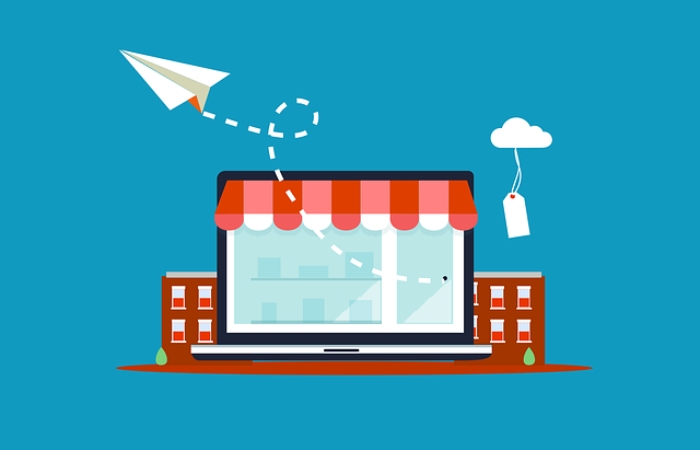If you manage or have a virtual store, image optimization is crucial to the success of your website. Product photography is an essential element of eCommerce conversion: it can ultimately convince users to purchase and has tremendous potential for optimization to help your website’s SEO and positioning.
This article will find a detailed guide to succeed with all the steps to optimize your shop images for SEO and improve search engine ranking.

Table of Contents
Why is Image Optimization Important Today?
Image optimization consists in obtaining high-quality photos in terms of format, size, and resolution that meet the needs of the digital environment.
In addition to creating attractive, clear, and meaningful images for users, this process also includes accurately tagging them so that Google’s algorithm can interpret them and understand the context in which they are placed.
If you have an online store, optimizing images can help improve the user experience for your website visitors and increase conversions.
Internet users arrive at your website and know your products or services through the images. For them to navigate smoothly, certain optimization adjustments are necessary, improving the overall SEO of the site and contributing to a higher reach in the search engines.
- Loading speed. How fast your store loads is crucial for the user experience and the possibility of its future conversion.
- Website Positioning. The optimization of images directly affects the loading speed, a criterion estimated by the Google algorithm to find the pages in their ranking.
- Resource optimization. Lighter images take up less space on the hosting.
- Increased conversion. The user experience has a significant impact on the decisions of potential customers. Providing good service can increase your store’s conversions and increase your sales.
Discover below the key factors to consider in image optimization and how you can work on them to improve your website’s SEO and rank better in the SERPs:
Importance of Original Images
The main problem with using product images you don’t own is that you could infringe on a copyright. In addition, you run the risk of receiving a notification to remove the image or even a penalty for using it.
On the other hand, Google also demands the criteria used to classify websites and will always favor pages with unique images.
When users search for a product, Google analyzes to show them as many different images as possible. If you use pictures on your website repeated on other websites, you have very little chance of ranking in the major SERPs.
Image Format for Web Guide to Succeed
Today, Google’s preferred formats for images are AVIF, JPEG 2000, JPEG XR, and WebP. These formats are best for photo compression and allow for very bright ideas. This way, loading times are shorter, and the overall user experience is more satisfying.
WebP format is the most widely used because it supports lossy and lossless compression, can be animated, and its transparency can also be changed.
WebP integrates the functionality of PNG, JPEG, and GIF. These files are typically 25% to 35% smaller than PNG and JPG files and of the same sound quality.
Image Compression: Fast Load Guide to Succeed
Although the formats we’ve mentioned are already lightweight, you can save a lot more weight by running your images through file compression software.
ECommerce platforms compress images by default, while others have plugins to perform this task.
If you don’t want to add these plugins, we recommend compressing the images externally. You can find free, online, and simple tools on the internet to compress pictures quickly.
Image Dimension
Other factors that can negatively affect the ranking of your virtual shop are the dimensions of the images. If the photos don’t have the correct dimensions, the browser wastes time finding the right size for each device. Guide to Succeed
This slows down the loading speed and can make users tired and cause them to leave your website. Remember that immediacy is a factor that internet users highly value. Nobody has time to lose!
Image Theft Protection
Image theft is rampant and can affect the uniqueness of your photos. If another website steals your images and is more optimized than yours, it can rank higher in search engines.
This situation will do you double harm: on the one hand, you will lose the resources you used to create your images, and on the other hand, you give another site an opportunity that could be a competitor.
- Author (artist, creator). He is the author of the picture.
- Copyright ©. The link to your copyright license and its description.
- Source (credit). The link to your website or the website where the picture was taken.
If your competitors copy the code you used to embed the images, Google still considers you the valid owner and prefers those tags.
E-commerce, short for electronic commerce, refers to the buying and selling of goods and services over the internet. E-commerce has become increasingly popular in recent years, as more and more people shop online for convenience, variety, and competitive pricing.
There are several types of e-commerce, including:
- Business-to-consumer (B2C): This is the most common type of e-commerce, in which businesses sell products or services directly to consumers through online stores or marketplaces.
- Business-to-business (B2B): This type of e-commerce involves businesses buying and selling goods or services to other businesses, often through online marketplaces or specialized e-commerce platforms.
- Consumer-to-consumer (C2C): This type of e-commerce involves consumers buying and selling goods or services to each other through online marketplaces or classifieds sites.
- Consumer-to-business (C2B): This type of e-commerce involves consumers selling goods or services to businesses, often in the form of freelancing or consulting services.
E-commerce has several advantages for both businesses and consumers. For businesses, e-commerce offers a wider market reach, lower overhead costs, and the ability to gather data and analytics on consumer behavior. For consumers, e-commerce offers convenience, a wider selection of products, and often lower prices compared to brick-and-mortar stores.
However, e-commerce also has some potential drawbacks, such as security risks, shipping and delivery issues, and the potential for fraud or scams. It’s important for both businesses and consumers to take appropriate steps to protect their personal information and financial data when shopping or selling online.
Conclusion
What is the value of images for the web positioning of your virtual store? Image SEO is an essential part of your website’s overall SEO strategy.
In order to get the most out of Google’s algorithms, all image-related elements must help improve the user experience. Guide to Succeed
To help you clarify all the ideas we’ve seen in this article, we’ve summarized the most important ones in the following image optimization tips:
- Use original images.
- Reduce the download size to make the website load faster.
- Add your images to a sitemap.
- Add the ALT attribute to all product images.
- Write descriptions that match the content of the images.
- Add HTML tags to control Google’s algorithm.

